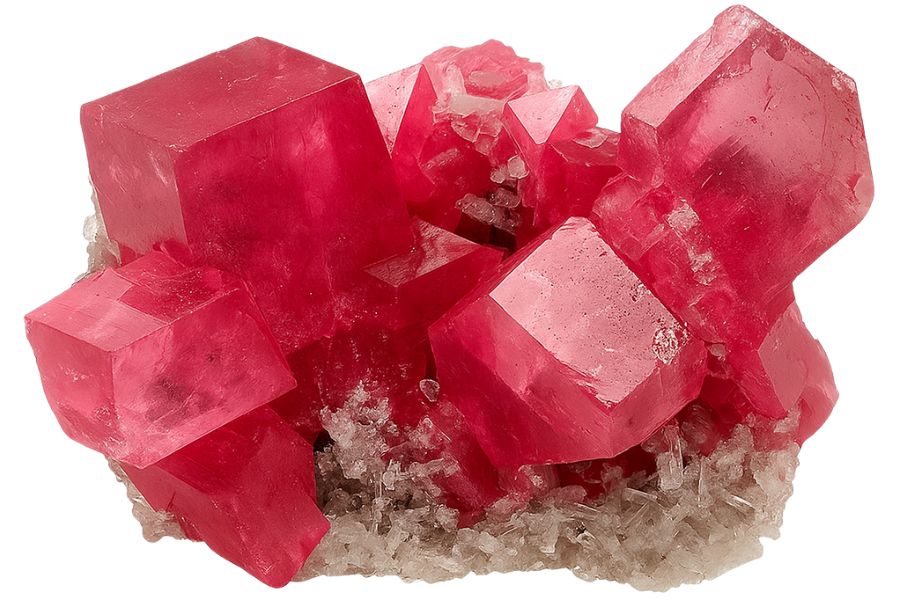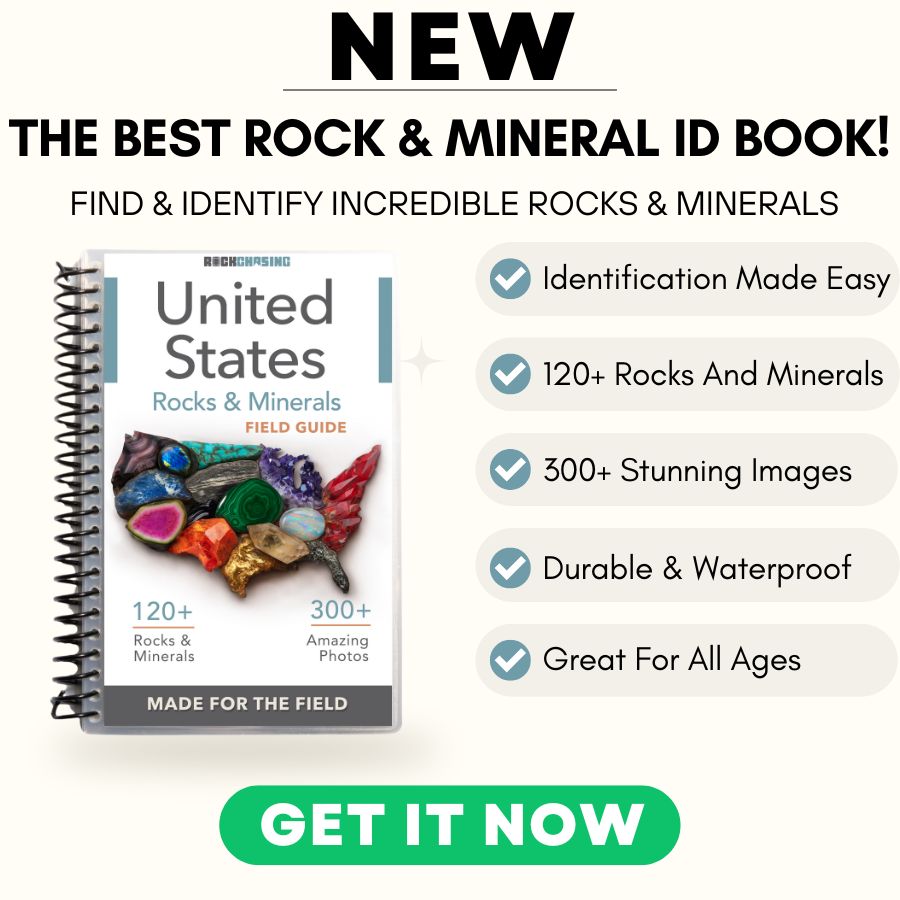Gem hunting in Colorado can be a great experience since the state holds some of the richest gemstone deposits in the country. This incredible geology has created the right conditions for a variety of precious stones to form.
With so much ground to cover, every outing carries the possibility of uncovering something remarkable.
Rivers, rocky outcrops, and even old mine dumps offer opportunities to uncover natural gems in Colorado. Many of these spots have produced high-quality stones that are prized by both casual collectors and serious gem hunters.
We’ll help you find the right locations in Colorado that can lead to a wide assortment of finds that surprise even seasoned rockhounds.
Knowing where to look and what to look for makes it possible to return with a variety of gemstones that showcase the state’s remarkable natural wealth.
- The extensive local experience and understanding of our team
- Input from several gem hunting groups and organizations
- The accessibility of the mining locations
- Safety and potential hazards when collecting
- Private and public locations
- A desire to include locations for both experienced gem hunters and those who are just starting out
Overall we’ve been able to put together a great list that anyone can use to locate a lot of beautiful gems.
The Gemstones Found In Colorado You Can Mine
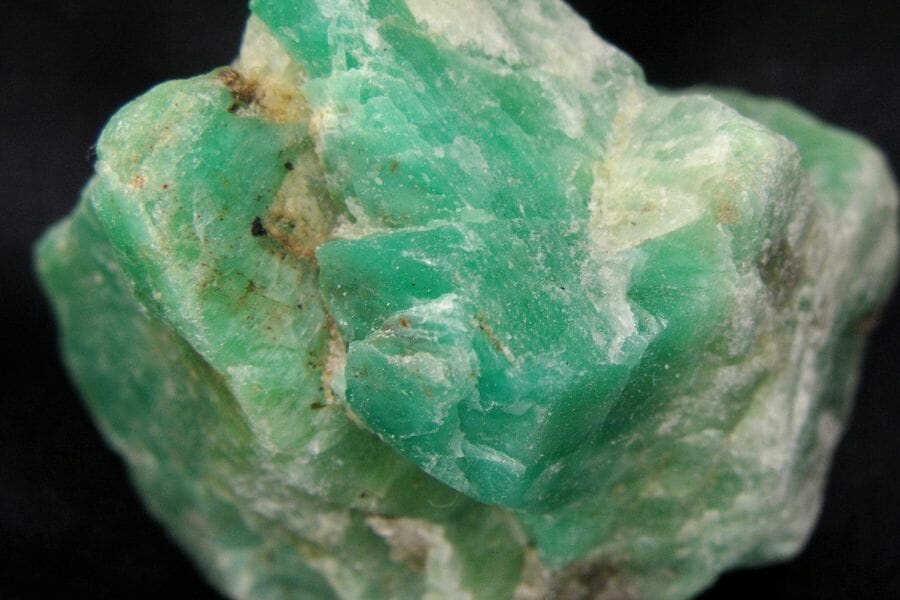
We are privileged to have access to so many of the gemstones found in Colorado. Not every state has this advantage! These gems, both rare and more common, can be located with the proper knowledge and luck.
Turquoise
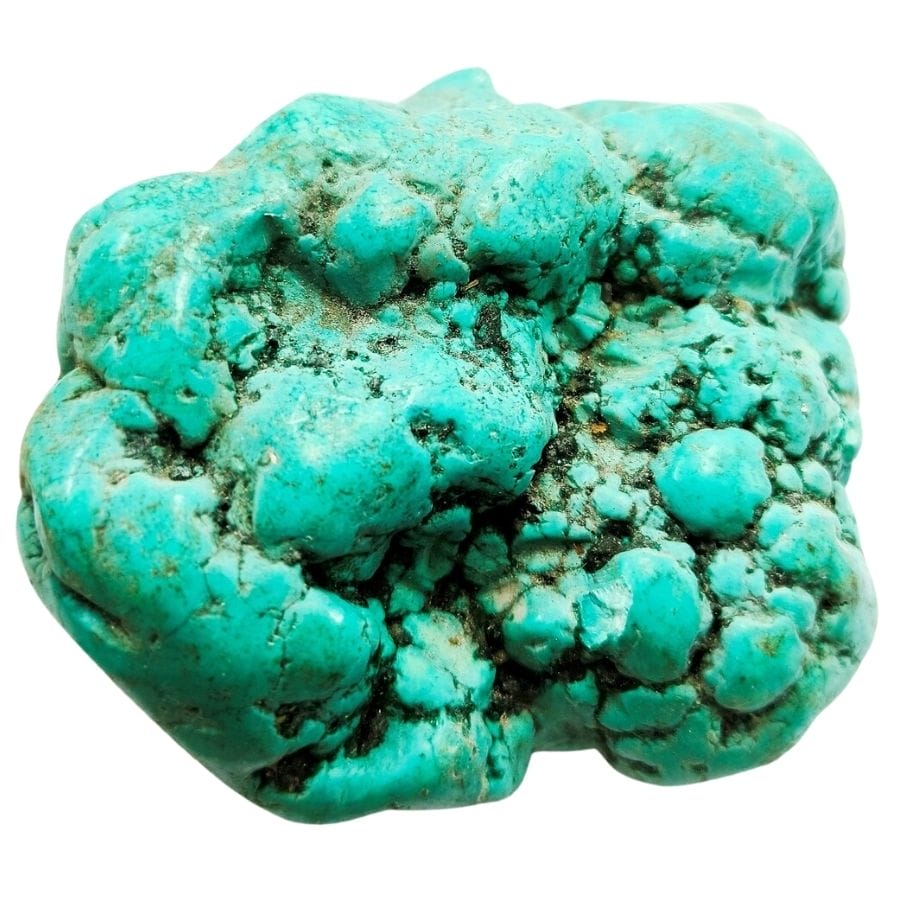
Turquoise is a beautiful blue-green mineral that’s one of the valuable rocks in Colorado. It’s known for its color, which can range from sky blue to green depending on the amounts of copper and iron in it.
The presence of copper gives turquoise its blue color, while iron adds a greenish hue.
Turquoise typically forms in arid regions, where groundwater seeps through rocks that contain minerals like copper, aluminum, and phosphorus. Over time, these elements combine and crystallize to form turquoise.
This usually happens near the surface of the Earth, in or near copper deposits. The mineral is often found in the cracks and cavities of larger rocks, where it has space to grow.
Because of its distinctive color, turquoise has been used in jewelry and decorative items for thousands of years.
Native American tribes in the southwestern United States, including Colorado, have a long history of using turquoise in their art and jewelry.
Beyond its beauty, turquoise is also of interest to collectors and geologists.
So, turquoise is not just a pretty stone; it’s a mineral with cultural, historical, and scientific significance, making it a cherished part of Colorado’s natural heritage.
Where you can find turquoise in Colorado
- Leadville, Lake County
- Manassa, Conejos County
- Cripple Creek, Teller County
Amazonite

Amazonite is a captivating greenish-blue mineral that’s part of the feldspar family. This mineral stands out because of its bright, turquoise color, which can vary from light green to deep blue-green.
The color of amazonite comes from trace amounts of lead and water in its structure.
Amazonite is commonly found in igneous rocks, especially granite. These are rocks formed from the cooling of magma or lava. During the cooling process, crystals of amazonite can form.
The slow cooling allows the crystals to grow large and develop their distinctive color. Sometimes, it’s found in large clusters, which are really impressive to see.
In Colorado, amazonite is often discovered in the Pike’s Peak area, which is known for its rich geological diversity.
With its bright and eye-catching color, amazonite is a great addition to jewelry. However, its large crystal forms is also unique and makes it stand out among other crystals in the state.
Where you can find amazonite in Colorado
- Pikes Peak, El Paso County
- Crystal Peak, Teller County
- Lake George, Park County
Amethyst
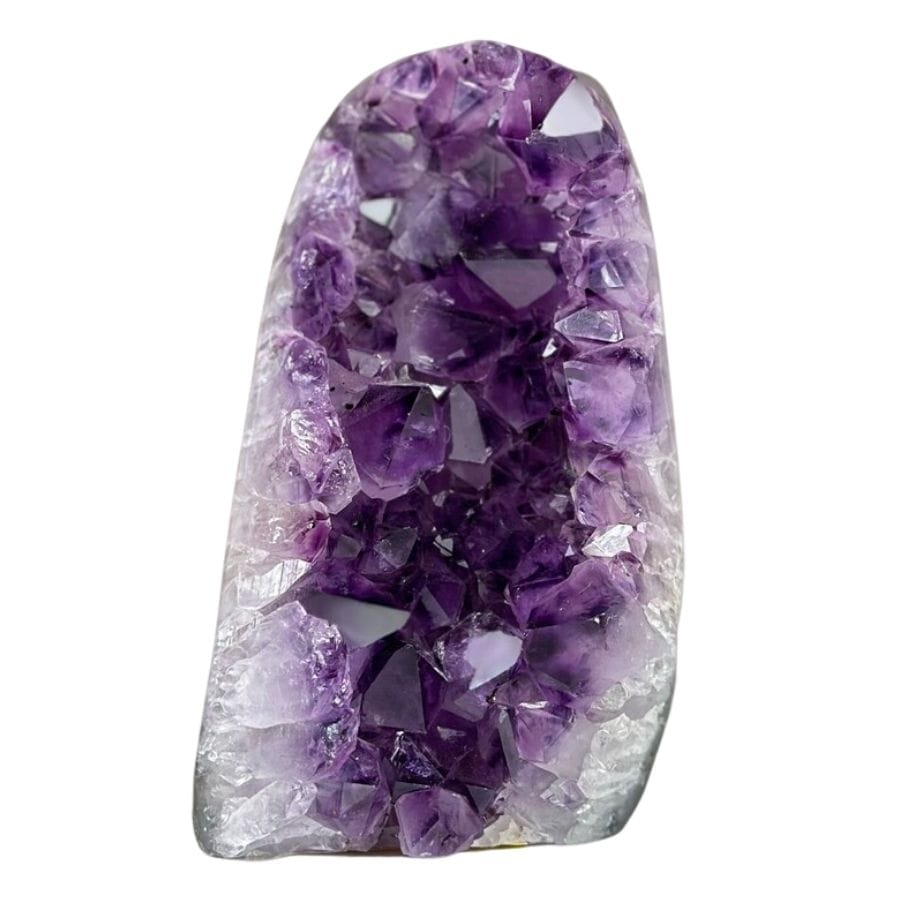
Amethyst is a stunning purple variety of quartz. This beautiful gemstone ranges in color from a light lavender to a deep violet.
The color of amethyst comes from iron impurities in the quartz, and the specific shade depends on the amount of iron and how it’s distributed within the crystal.
Amethyst is usually found in hollow rocks called geodes, which form when gas bubbles in molten rock create cavities. Over millions of years, mineral-rich water seeps into these cavities.
The minerals, including silicon dioxide which makes up quartz, slowly crystallize inside the cavity and form amethyst. These crystals can vary in size – some are just tiny points, while others can be quite large.
In Colorado, amethyst is found in areas with volcanic rocks, where these kinds of geodes are more common.
Amethyst is often cut and polished tp be used in jewelry, and it can also be displayed in its natural crystal form. It’s also beloved by mineral collectors for its variety of shapes and the way it forms in geodes.
Where you can find amethyst in Colorado
- Creede Mining District, Mineral County
- Wolf Creek Pass, Archuleta County
- Red Feather Lakes, Larimer County
Chrysoprase
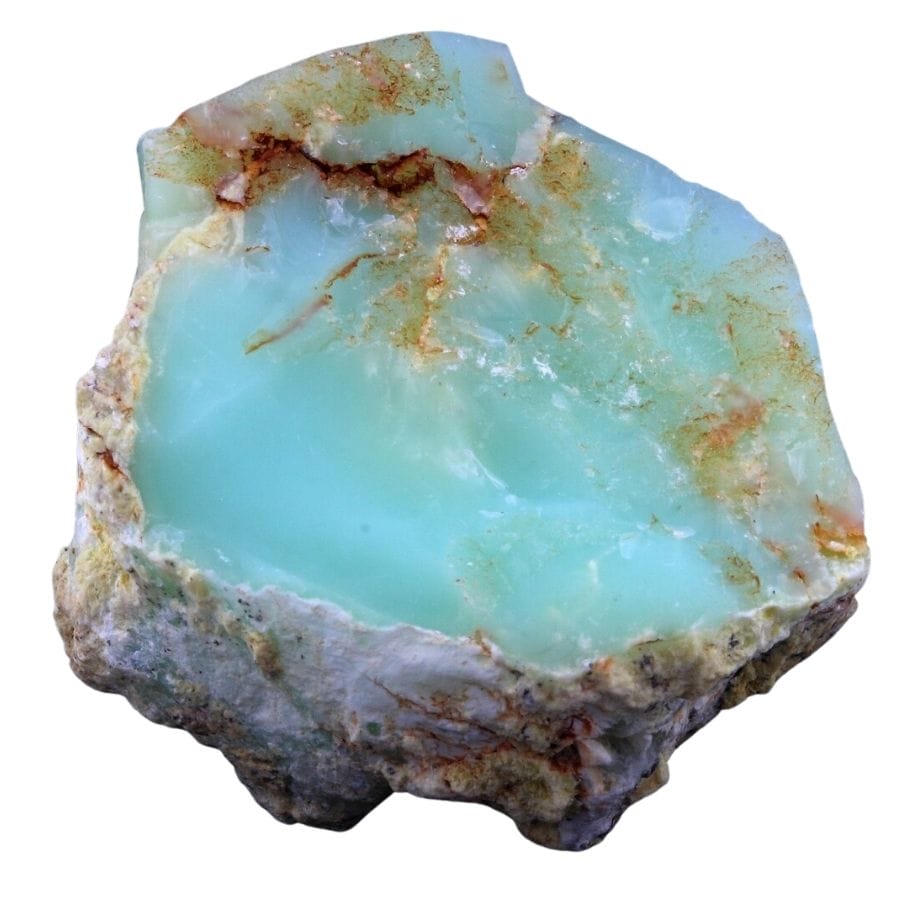
Chrysoprase is a variety of chalcedony, which is a form of quartz, and it’s one of the more intriguing gemstones found in Colorado.
The green color of chrysoprase comes from small amounts of nickel in the mineral, and the shade can range from a light, minty green to a rich, apple green.
Chrysoprase typically develops in nickel-rich serpentine rocks or lateritic weathering profiles. This means it’s found in areas where rocks have been altered by water and weather over a long time.
As these rocks break down, chrysoprase is formed from the silicon dioxide in the chalcedony and the nickel from the surrounding rock. The specific conditions needed for its formation make it relatively rare.
In Colorado, chrysoprase is found in areas with these nickel-rich rocks. The state’s diverse geology includes regions where the right combination of weathering and mineral content come together to create this gemstone.
Chrysoprase’s soft green color and rarity make it suitable for jewelry. Chrysoprase is also of interest to collectors and geologists. For collectors, its striking color and formation process add to its appeal.
Where you can find chrysoprase in Colorado
- Sedalia Mining District, Chaffee County
- Middle Park, Grand County
- Creede Mining District, Mineral County
Fire Opal
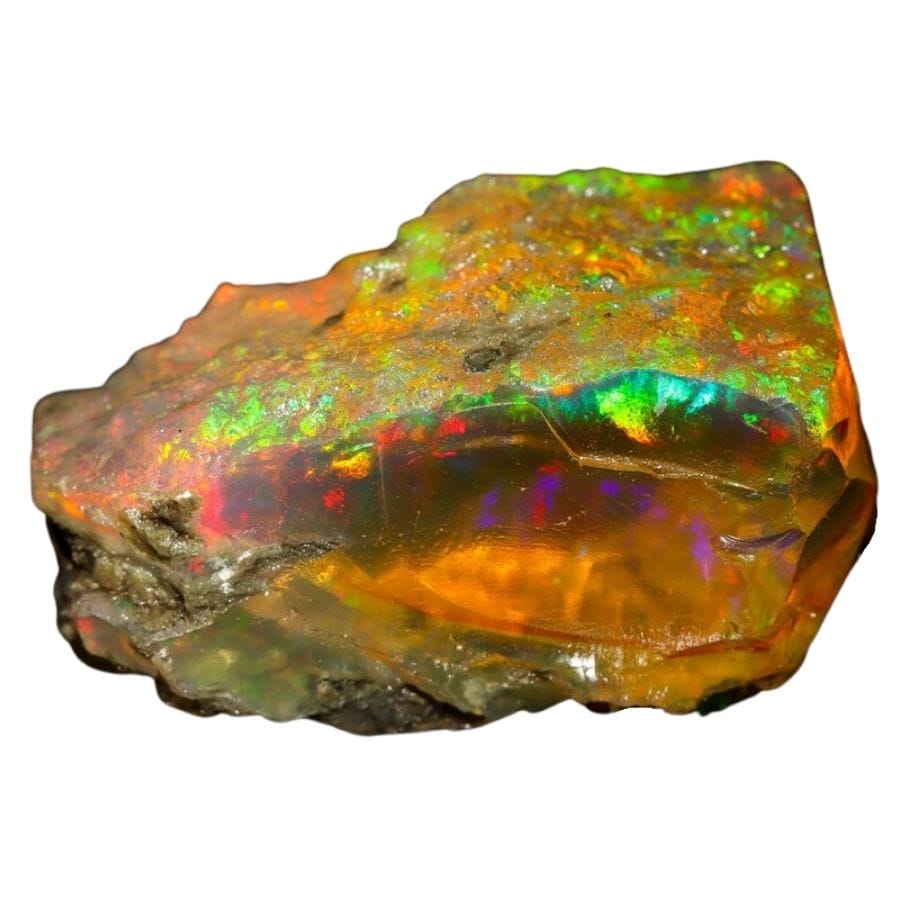
What sets fire opal apart from other opals is its warm, vibrant base colors – ranging from yellow to orange to red. Some pieces might show a play of color, but others might not.
When water rich in silica trickles down through rocks like rhyolite, a type of volcanic rock, fire opal is formed. Over time, this silica-laden water fills cracks and voids in the rock
As the water evaporates, it leaves behind silica deposits that harden into opal. The presence of trace amounts of iron oxide gives fire opal its unique orange and red colors.
Fire opal has bright, eye-catching colors that make it a popular choice for jewelry. Beyond its aesthetic appeal, fire opal is also of interest to collectors and geologists.
For collectors, the rarity and distinctive colors of fire opal make it a prized addition to their collections.
For geologists, studying fire opal helps them understand more about volcanic regions and the conditions that lead to the formation of different types of opal.
Where you can find fire opal in Colorado
- Vulcan, Gunnison County
- Green Mountain, Jefferson County
- Rio Grande River, Mineral County
Moss Agate

Moss agate is a unique and visually stunning type of agate found among the rocks of Colorado. What makes moss agate special is its appearance, which looks like tiny mossy plants or trees trapped inside a clear or milky-white stone.
This effect isn’t actually due to any plant material; instead, it’s caused by iron or manganese minerals forming patterns within the stone.
The formation of moss agate usually happens when the silica-rich water from volcanic rocks seeps into cavities within other rocks. Over time, this silica water deposits layers of quartz, and sometimes chalcedony, inside these cavities.
The trace minerals, like manganese or iron, create the green, brown, or red “mossy” inclusions. These inclusions don’t grow or change over time, but they are arranged in such a way that they resemble moss or trees.
Collectors and nature enthusiasts are drawn to moss agate’s earthy, natural look, which resembles a miniature landscape trapped within a stone.
Beyond its beauty, moss agate is also interesting for educational purposes. It helps to illustrate how minerals can form and change within rocks.
Where you can find moss agate in Colorado
- Middle Park, Grand County
- Gunnison River, Mesa County
- South Park, Park County
Rhodochrosite
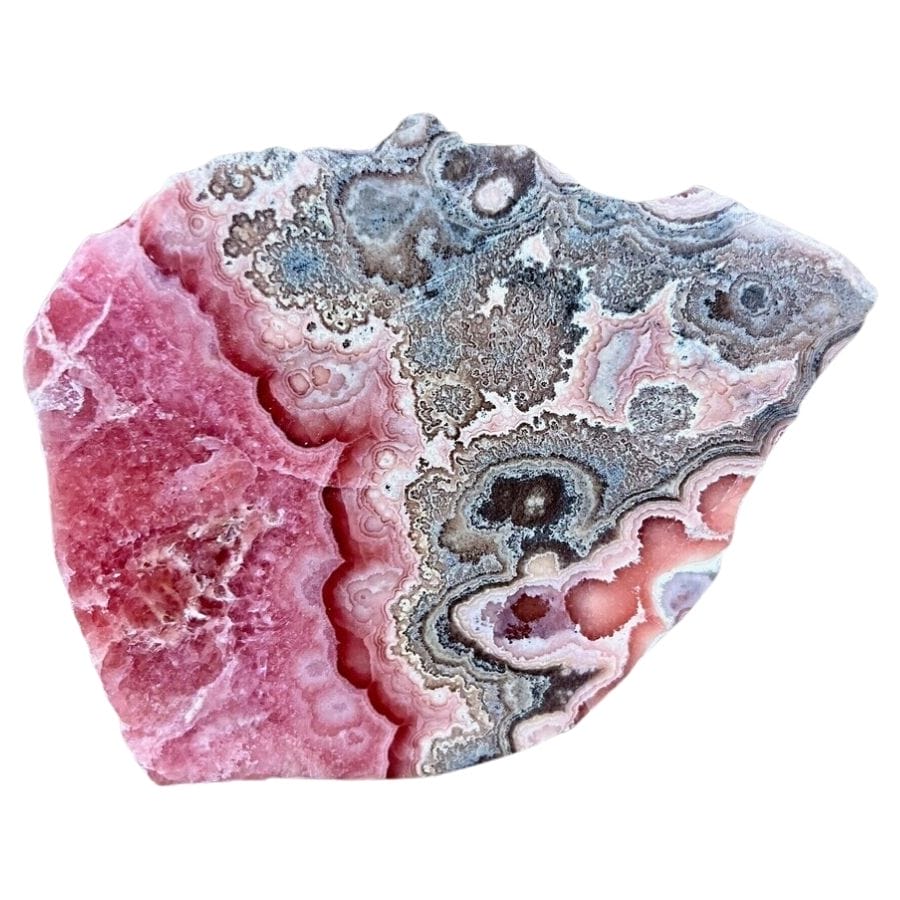
Rhodochrosite is a striking mineral known for its rich pink and red colors. It’s made of manganese carbonate and often forms in layers, creating bands of different shades of pink, sometimes mixed with white or yellow.
The formation of rhodochrosite occurs in the cavities or fractures of sedimentary rocks or in hydrothermal veins in igneous rocks. These veins are formed by hot, mineral-rich water flowing through cracks in the rock.
As the water cools, the minerals start to crystallize, forming rhodochrosite. In some cases, it can also form due to the action of manganese-rich fluids on limestone, a process that takes place over millions of years.
Colorado is known for producing some of the most beautiful specimens of rhodochrosite in the world.
Rhodochrosite’s distinctive banding and colors are emphasized when it’s cut and polished into gems and set in jewelry. While rhodochrosite isn’t as expensive as other gems, large and high-quality specimens can still fetch quite a price.
Where you can find rhodochrosite in Colorado
- Alma Mining District, Park County
- Idarado Mine, Ouray County
- Mountain King Mine, Ouray County
Selenite

Selenite is a clear, beautiful variety of the mineral gypsum, and it’s one of the many fascinating gemstones found in Colorado. This mineral is known for its transparent, glass-like appearance and can form in large, flat crystals.
This mineral needs the presence of sulfate-rich waters to form. It usually appears in places where water evaporates rapidly, like in salt flats, hot springs, or around the edges of lakes.
As the water evaporates, it leaves behind minerals, including calcium sulfate, which crystallizes into selenite. These crystals can grow in different shapes – some are long and thin, while others are more tabular.
In Colorado, selenite can be found in areas where there are evaporite deposits – these are layers of minerals left behind by ancient seas or lakes that have dried up.
People value selenite for a variety of reasons. Its clarity and luster make it a popular choice for decorative items and carvings.
Selenite’s transparent quality also makes it interesting for educational purposes, as it provides a clear example of crystal formation.
Selenite is also often appreciated for its large, well-formed crystals and its characteristic transparency. Its crystals can be quite transparent and resemble sheets of glass. It’s thus a beautiful addition to rock collections.
Where you can find selenite in Colorado
- Eureka Mining District, San Juan County
- Irish Canyon, Moffat County
- Sneffels Mining District, Ouray County
Topaz

Topaz comes in many colors, including clear, blue, pink, and yellow, but it’s often recognized for its striking blue hue. Topaz is made of a mineral called fluorine aluminum silicate, and its different colors are usually due to impurities or treatments.
This gem forms in igneous rocks, which are formed from cooled magma or lava. Topaz can grow in pegmatites, which are coarse-grained rocks that form during the last stages of magma cooling.
The crystals develop in cavities within these rocks, where they have enough space to grow.
Sometimes, topaz is also found in alluvial deposits, which are collections of loose sediment in riverbeds, where it lands after being washed away from its original rock.
Aside from topaz’s colors, its hardness makes it durable and perfect for various types of jewelry, including rings, necklaces, and earrings. Its crystal clarity also makes it a hit with collectors and gem enthusiasts.
Where you can find topaz in Colorado
- Pikes Peak, El Paso County
- Devils Head Pegmatite Mining District, Douglas County
- Ruby Mountain, Chaffee County
Apatite

Apatite is a fascinating mineral that adds to the variety of rocks and minerals found in Colorado. It’s known for its range of colors, from green to blue, and sometimes even purple. Apatite is not just one mineral, but a group of phosphate minerals.
This means it has phosphorus, an element that is important for life on Earth, in its structure along with calcium and other elements.
The way apatite forms is quite interesting. It usually develops in igneous rocks — the type of rocks that form when molten rock cools and solidifies.
Apatite can also be found in metamorphic rocks. These conditions allow apatite to grow in small, beautiful crystals.
In Colorado, apatite is often discovered in areas where mining for other minerals, like mica and feldspar, takes place. This is because apatite tends to form alongside these other minerals.
Apatite’s bright colors and crystal shape make it a sight to behold, and it can be used as centerpieces in jewelry. However, apatite is also valuable because it contains phosphorus, a key ingredient in fertilizers that help plants grow.
Where you can find apatite in Colorado
- Alma Mining District, Park County
- Crystal Lode, Eagle County
- Big Boulder pegmatite, Crystal Mountain
Aquamarine
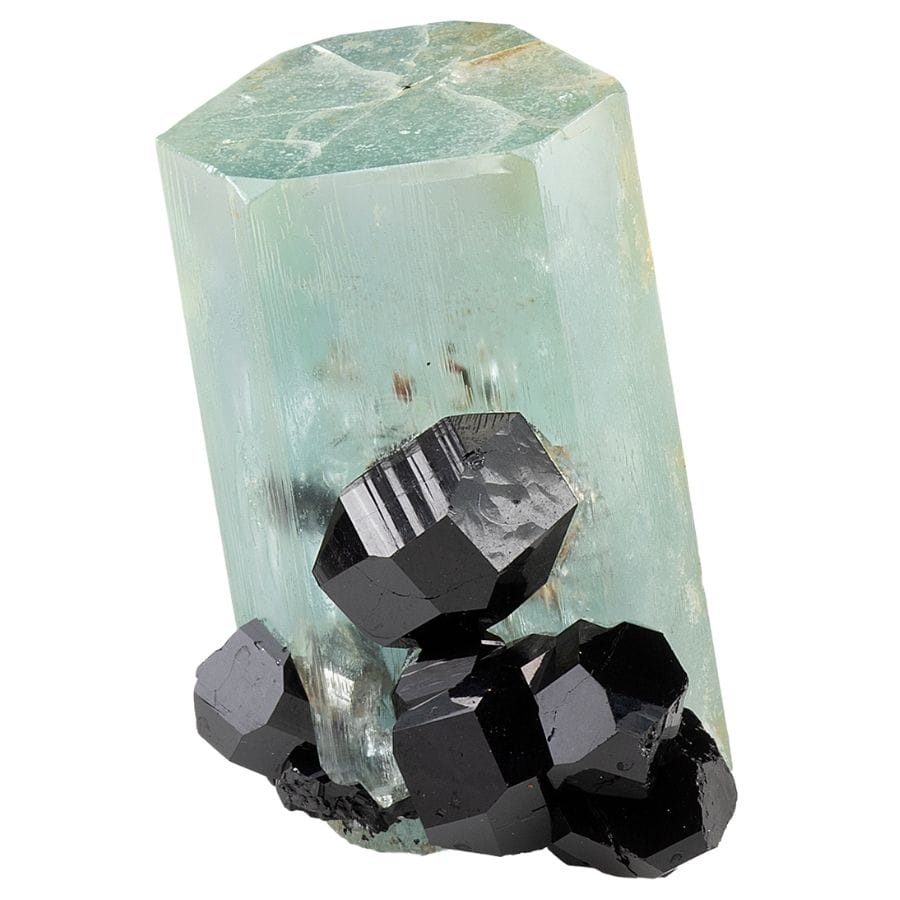
Aquamarine is a stunning gemstone that is part of the beryl family, the same family as emerald. It’s famous for its beautiful sea-blue color, which can range from pale to dark blue.
The formation of aquamarine is a fascinating process. It typically occurs in granite rocks, which are formed deep inside the Earth from cooled magma. Aquamarine crystals grow in these rocks under high temperature and pressure conditions.
The blue color of aquamarine comes from iron impurities within the beryl crystal structure. Sometimes, these crystals can grow quite large, making them even more impressive.
In Colorado, aquamarine is often discovered at high elevations in the Rocky Mountains. The state is actually one of the few places in the United States where good-quality aquamarine is found.
Aquamarine’s beautiful blue color makes it a popular choice for jewelry, like rings, necklaces, and earrings. It’s not just the color that makes it desirable; its clarity and hardness also contribute to its appeal.
Where you can find aquamarine in Colorado
- Mount Antero, Chaffee County
- Mount White, Chaffee County
- Quartz Creek Pegmatite Mining District, Gunnison County
Barite
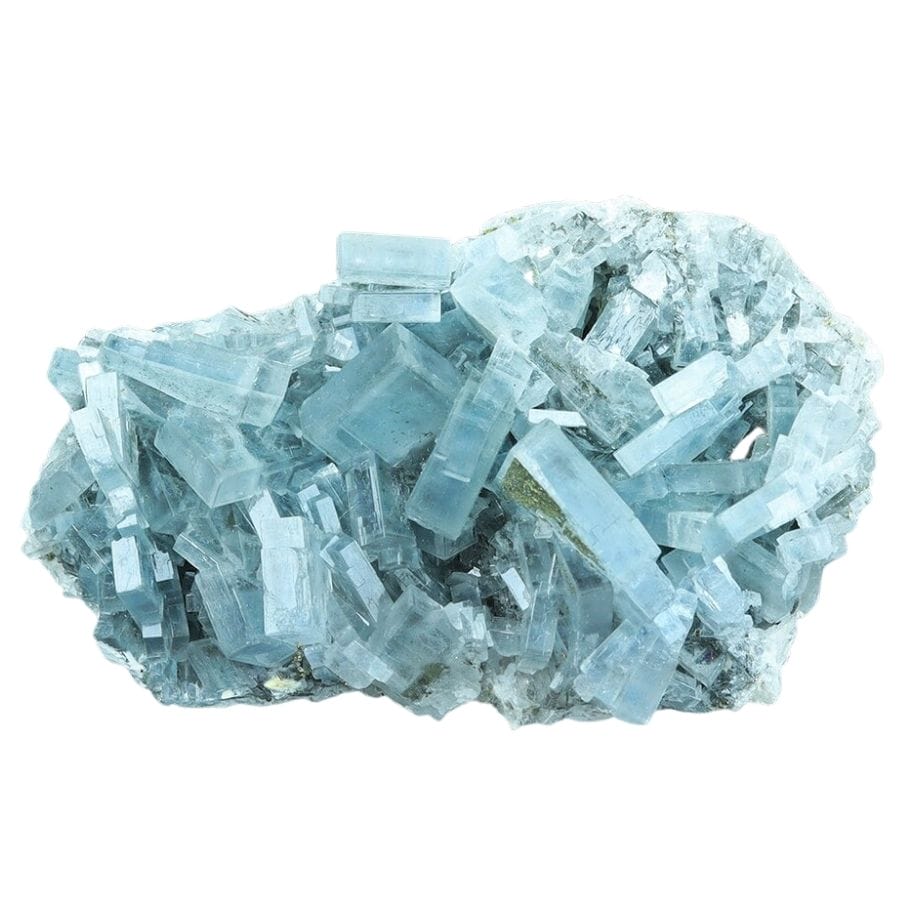
Barite is mainly made of barium sulfate, a combination of barium, sulfur, and oxygen. It’s known for its heaviness and can come in various colors, like white, blue, yellow, and sometimes even red.
This mineral often forms in sedimentary rocks, which are rocks made from layers of material settled over time, like mud or sand.
It can form in these rocks either from the remains of tiny sea creatures or from hot mineral-rich waters flowing through the rocks.
This hot water dissolves minerals, and when it cools down, barite crystals start to form. Sometimes, barite is found in veins or layers within rocks, and other times it forms as clusters of crystals that can look really neat.
In Colorado, barite is typically found in areas with sedimentary rocks, especially in places where there used to be a lot of volcanic activity. This makes the state an interesting spot for finding this mineral.
Barite is used a lot in the oil and gas industry to make drilling mud, which helps keep the drill bit cool and removes the rock cuttings from the hole. It’s also used in making paint, rubber, and X-ray technology.
Beyond its industrial uses, barite is appreciated by mineral collectors for its crystal formations and colors. Its ability to form in a variety of shapes and colors makes it a fascinating subject for study and collection.
Where you can find barite in Colorado
- Stoneham, Weld County
- Barite Lode Occurrence, Custer County
- Hartsel, Park County
Bismuth

Bismuth is a heavy, brittle metal with a silvery-white color, but when exposed to air, it forms a thin layer that reflects a rainbow of colors.
The formation of bismuth happens deep underground. It’s usually found in its native form, which means it’s not combined with other elements. Bismuth forms in veins within rocks, often alongside minerals like quartz and feldspar.
These veins are created by hot fluids that move through cracks in the rocks, carrying dissolved bismuth. As the fluids cool, bismuth crystallizes, often forming intricate and beautiful patterns.
One of bismuth’s remarkable features is its colorful oxide layer, which makes it a favorite among mineral collectors.
In addition to its beauty, bismuth has practical uses. It’s also used in making some types of low-melting alloys, which melt at lower temperatures than other metals, and it’s an ingredient in some types of medicine.
Bismuth is also used in fire detection and extinguishing systems because of its unique properties.
Where you can find bismuth in Colorado
- Gold Hill Mining District, Boulder County
- North Park, Jackson County
- Breckenridge Mining District, Summit County
Fluorapatite
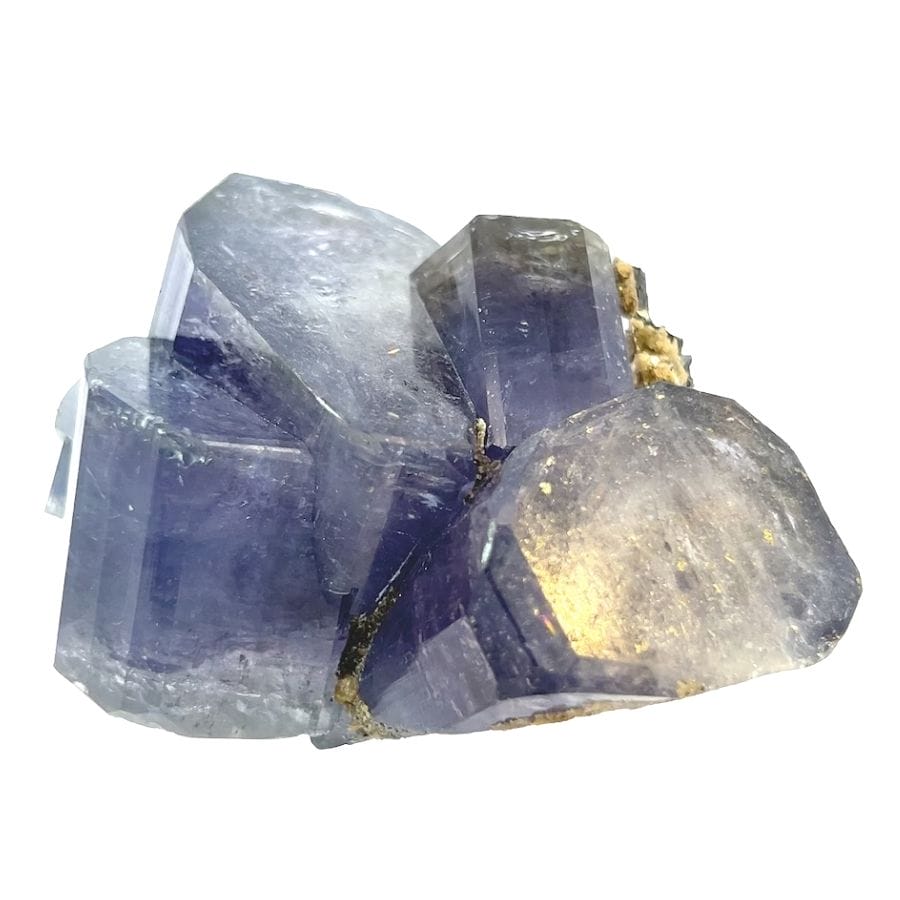
Fluorapatite stands out among the types of rocks found in Colorado. It’s a variant of apatite, which means it’s part of the same mineral family, but with a twist – fluorapatite has fluorine in its structure.
This mineral often has a bright green or blue color, but it can also be found in shades of purple, pink, and even colorless.
Fluorapatite is typically found in igneous rocks. The mineral can also develop in metamorphic rocks.
In these environments, fluorapatite forms as crystals, which can vary in size. Sometimes these crystals are small and embedded in other rocks, and other times they can grow quite large and be quite stunning to see.
This mineral’s bright colors and crystal formations make it a hit with mineral collectors.
It’s also significant in the field of agriculture. It’s a source of phosphorus, an essential nutrient for plants. This makes it a key ingredient in some fertilizers, helping crops grow.
Where you can find fluorapatite in Colorado
- Mount Antero, Chaffee County
- Querida, Custer County
- Colorado Springs Area, El Paso County
Pyrite

Pyrite, often called fool’s gold, is a shiny, metallic mineral. It gets its nickname because it looks a lot like real gold with its yellow color and metallic luster, but it’s actually iron sulfide.
It can grow in sedimentary rocks, like shale and coal, where it forms from the remains of tiny organisms. It also forms in igneous rocks and metamorphic rocks.
One of the coolest things about pyrite is how it looks. It often forms perfect cubes or other shapes, which makes it really interesting to find and study.
Sometimes, pyrite crystals are found inside other rocks, like limestone or quartz, and they can create beautiful, intricate patterns.
The worth of pyrite isn’t in its monetary value like real gold. For one, it’s valuable to mineral collectors because of its unique crystal shapes and shiny appearance.
Additionally, in the past, pyrite was used to make sulfuric acid, which is an important chemical in many industries. However, this isn’t done much anymore.
Where you can find pyrite in Colorado
- Leadville, Lake County
- Gilman Mining District, Eagle County
- Gold Hill Mining District, Boulder County
Smoky Quartz
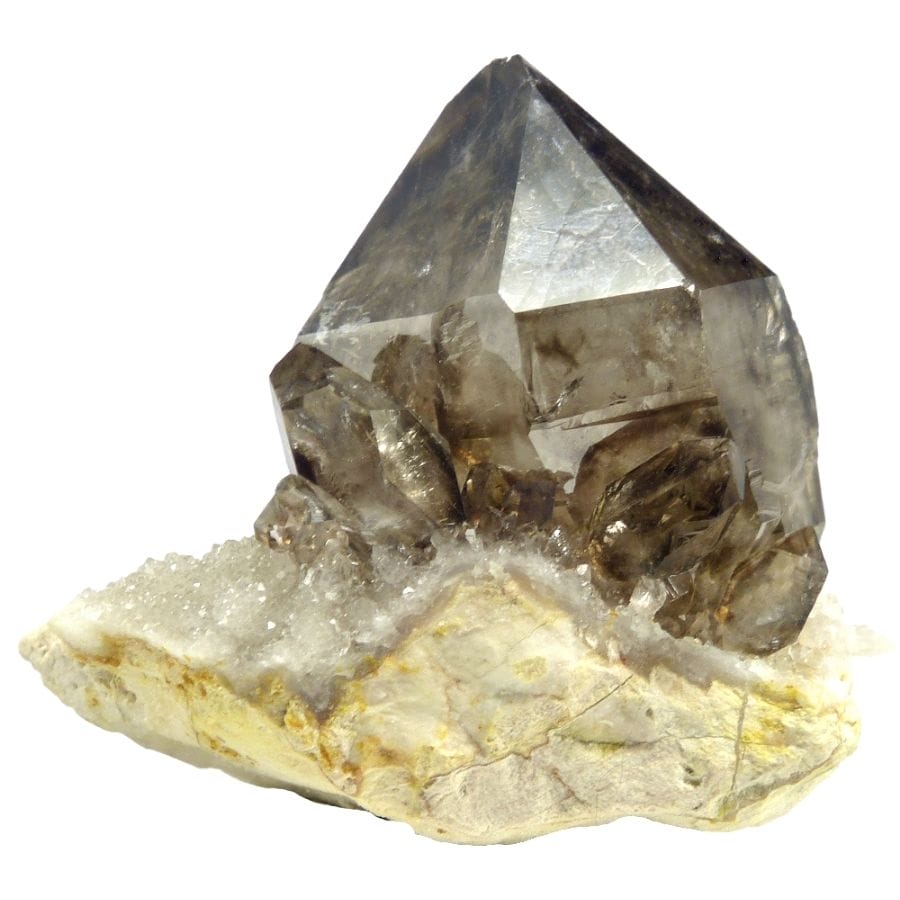
What makes smoky quartz special is its color, which ranges from a light, smoky gray to a deep, dark brown. This color comes from natural radiation from the rocks around it, affecting the crystal structure of the quartz.
This type of quartz forms in much the same way as clear quartz. It starts out as silicon dioxide, a combination of silicon and oxygen, which is very common in the Earth’s crust. When this silicon dioxide cools slowly, it forms crystals.
The presence of natural radiation during this cooling process is what gives smoky quartz its distinctive color. This radiation can come from radioactive minerals in the surrounding rocks or from natural radiation in the Earth.
In Colorado, smoky quartz is often found in the Rocky Mountains, especially in areas with a lot of granite and other types of igneous rocks. These environments provide the perfect conditions for the formation of smoky quartz crystals.
Because of its color and crystal shapes, smoky quartz can be an interesting and compelling part of any collection. It’s a favorite among mineral collectors because of its beauty and the variety of crystal forms it can take.
Where you can find smoky quartz in Colorado
- Pikes Peak, El Paso County
- Crystal Peak, Teller County
- Mount Antero, Chaffee County
Epidote

Epidote is a fascinating mineral that adds a touch of green to the palette of crystals found in Colorado. It’s known for its pistachio-green color, but it can also be yellow-green or almost black.
Epidote is made of a mix of calcium, aluminum, iron, and oxygen. It typically forms in metamorphic rocks.
Sometimes, epidote can also form in igneous rocks. In these rocks, epidote can grow in long, thin crystals. You can usually find epidote in the cracks or fractures in these rocks, where it has room to grow.
With its unique green color and crystal shapes, epidote is a fun rock to collect. Some people even like to use it in jewelry.
Where you can find epidote in Colorado
- Calumet Mine, Turret Mining District, Chaffee County
- Jamestown Mining District, Boulder County
- Cañon City, Fremont County
Fuchsite

Fuchsite is a variety of muscovite, a common type of mica, and is known for its sparkling green color. This unique hue comes from the high chromium content in the mineral.
Typically, fuchsite forms in metamorphic rocks. The extreme heat and pressure deep within the Earth alter the composition and structure of the original rock, resulting in the formation of new minerals like fuchsite.
Fuchsite can also appear in quartzite and schist, where it lends a glittery, green sparkle to these rocks.
Because of its bright green color and shimmering surface, fuchsite is great to look at. People usually use it as a decorative piece, and they also sometimes include it in jewelry.
It’s also sometimes used as a pigment and in various industrial applications because of its heat resistance and insulating properties.
Where you can find fuchsite in Colorado
- Poncha Pass, Chaffee County
- Medicine Bow Mountains, Jackson County
- Lower San Miguel Mining District, San Miguel County
Rhodonite

Rhodonite is a captivating mineral known for its striking pink and red hues, often with black manganese oxide veins running through it. The name rhodonite comes from the Greek word “rhodon,” which means “rose,” a nod to its beautiful rosy color.
The formation of rhodonite is closely tied to metamorphic and sedimentary processes.
Rhodonite forms when manganese-rich rocks are subjected to the intense conditions in the Earth’s crust, leading to the creation of this uniquely colored mineral.
In some cases, rhodonite can also form in sedimentary environments, usually as a result of manganese deposits being altered over time.
Because of its striking red color, people like to use rhodonite in jewelry. The contrast of the pink and red with the black veins creates a visually appealing effect that is appreciated by collectors and jewelry makers.
Where you can find rhodonite in Colorado
- Leadville, Lake County
- Rico Mountains, Dolores County
- Crested Butte, Gunnison County
Smithsonite
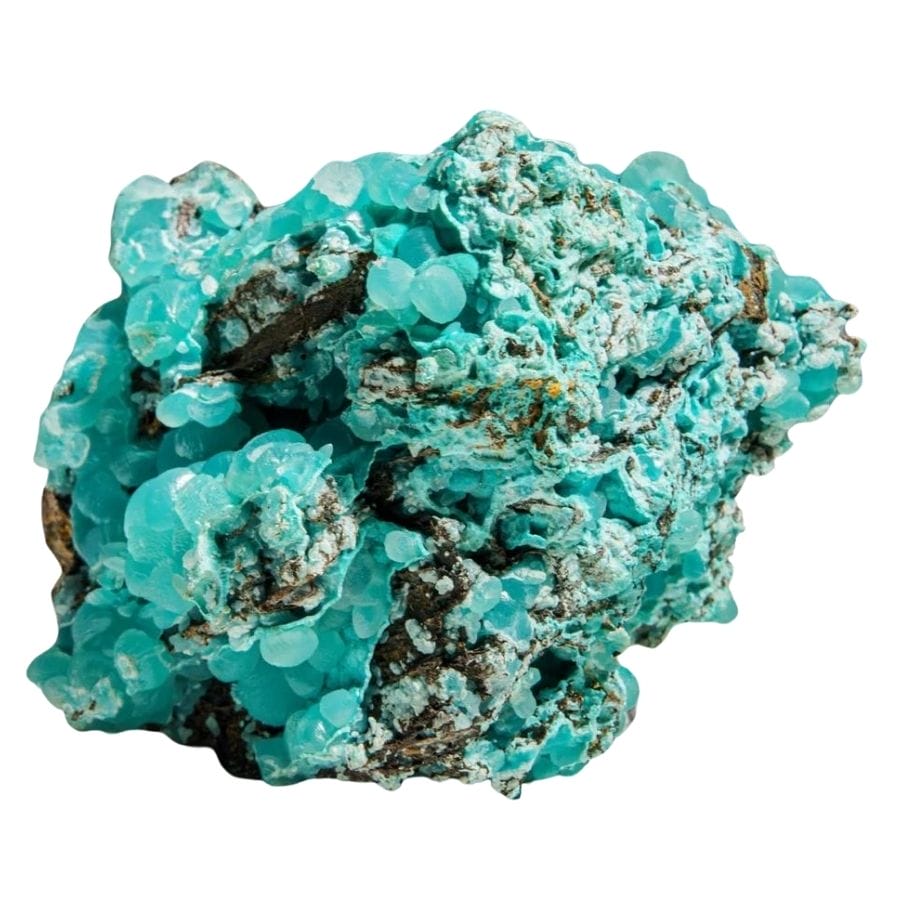
With its range of colors, from light blue and green to pink and yellow, smithsonite is a zinc carbonate mineral. The variety of colors in smithsonite is due to different types of impurities in the mineral.
The formation of smithsonite is particularly interesting. It typically occurs in areas with deposits of zinc and is often formed as a secondary mineral.
This means it forms as a result of weathering or oxidation of a primary mineral, like sphalerite, which is a zinc sulfide mineral. When sphalerite is exposed to oxygen and carbon dioxide in water, it can change into smithsonite.
This process often occurs in the upper parts of zinc ore deposits, making smithsonite relatively common in areas with zinc mining activities.
In Colorado, smithsonite is found in regions with a history of zinc mining. The state’s complex geological history, which includes extensive mineral deposits, creates ideal conditions for the formation of smithsonite.
Smithsonite’s range of colors and crystal forms make it a popular choice among mineral collectors and enthusiasts.
Beyond its aesthetic appeal, smithsonite has practical uses as well. It’s an important source of zinc, a metal used in many different industries, from construction to manufacturing.
Zinc is also essential for many biological processes, making it important in the field of biochemistry.
Where you can find smithsonite in Colorado
- Leadville, Lake County
Stellerite
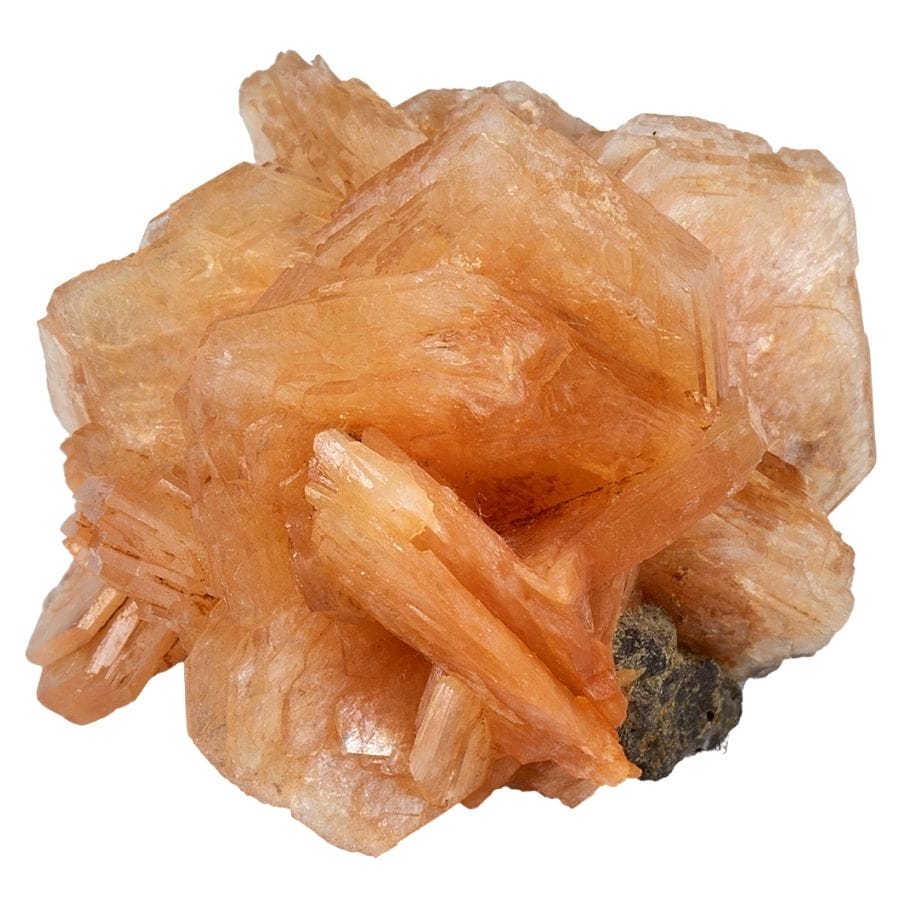
Stellerite is a lesser-known but fascinating mineral, part of the zeolite group, and it’s among the crystals found in Colorado.
This mineral is known for its delicate, often star-like crystal formations and can range in color from clear to a soft, peachy or pink hue.
The formation of stellerite is linked to volcanic activity. It typically forms in the cavities or air pockets within volcanic rocks. These pockets provide space for the crystals to grow.
The process begins when volcanic ash layers react with groundwater. Over time, this interaction leads to the formation of zeolite minerals, including stellerite.
The unique crystal shapes of stellerite are a result of the specific conditions under which it forms, such as the chemical composition of the water and the temperature and pressure in the rock cavities.
Stellerite’s intricate crystal structures and subtle colors make it a prized specimen for mineral collectors.
Beyond its aesthetic appeal, stellerite is of interest to scientists for its unique formation process.
Studying this mineral helps geologists understand more about volcanic rock environments and the conditions that lead to the formation of different types of zeolites.
Where you can find stellerite in Colorado
- Mount Antero, Chaffee County
- Mount White, Chaffee County
Wulfenite

Wulfenite has vibrant colors and unique crystal shapes, adding to the rich variety of rocks found in Colorado. This mineral typically comes in striking shades of orange, yellow, and red.
It’s made of lead molybdate, a combination of lead, molybdenum, and oxygen.
The formation of wulfenite is an interesting process. It often occurs in the oxidation zones of lead ore deposits. These zones are areas where lead minerals are exposed to oxygen in the air and water.
This exposure changes the lead minerals, and one of the results can be wulfenite. The way it forms results in distinctive thin, tabular crystals, sometimes resembling small, colorful plates.
In Colorado, wulfenite can be found in regions with a history of lead mining.
With its bright colors and crystal forms, it’s no surprise that wulfenite is a favorite among mineral collectors.
Additionally, wulfenite has practical uses. Molybdenum, a component of wulfenite, is an important metal used in steel and other alloys, adding strength and resistance to corrosion.
Where you can find wulfenite in Colorado
- Leadville, Lake County
- Turret Mining District, Chaffee County
Our Favorite Places For Gem Mining in Colorado
We’ve chosen five really great places to start looking for gems if we had to start somewhere. There are a lot of great options but these are some of our favorites. We’ve included several great spots for adults looking for more authentic gem mining as well as a couple of recommendations for those with kids that are looking to get started.
Always Confirm Access and Collection Rules!
Before heading out to any of the locations on our list you need to confirm access requirements and collection rules for both public and private locations directly with the location. We haven’t personally verified every location and the access requirements and collection rules often change without notice.
Many of the locations we mention will not allow collecting but are still great places for those who love to find beautiful rocks and minerals in the wild without keeping them. We also can’t guarantee you will find anything in these locations since they are constantly changing.
Always get updated information directly from the source ahead of time to ensure responsible rockhounding. If you want even more current options it’s always a good idea to contact local rock and mineral clubs and groups
Last Chance Mine

504 Last Chance Mine Rd, Creede, CO 81130, United States
Last Chance Mine is located in the mountains of Clear Creek County. The mine was originally established in 1883 by a group of prospectors and has been in continuous operation ever since. It is one of the oldest continuously operating mines in the United States and has produced millions of dollars worth of precious metals over its long history.
The mine is currently owned and operated by Clear Creek Mining Company, which produces gold, silver, lead, zinc, and other minerals from the ore extracted from this mine.
The Types Of Gems Found At Last Chance Mine
There are all kinds of cool gems and minerals in this location that you can’t discover elsewhere, which is why this mine is highly popular. Most of the gems you can find here are:
- Agates
- Amethyst
- Aquamarine
- Beryl
- Black Tourmaline
- Jasper
- Rhodonite
- Rose Quartz
- Turquoise
The Best Time To Visit Last Chance Mine In Colorado
The best time to visit this mine is during the summer months, from June to September. The warmer weather makes it easier to explore the area and enjoy the many activities available, including gem mining. The mine is open year-round, but you may experience snow or rain during the winter months.
If you want REAL results finding incredible rocks and minerals you need one of these 👇👇👇
Finding the coolest rocks in isn’t luck, it's knowing what to look for. Thousands of your fellow rock hunters are already carrying Rock Chasing field guides. Maybe it's time you joined the community.
Lightweight, mud-proof, and packed with clear photos, it’s become the go-to tool for anyone interested discovering what’s hidden under our red dirt and what they've already found.
Join them, and make your next rockhounding trip actually pay off.
What makes it different:
- 📍 Find and identify 140 incredible crystals, rocks, gemstones, minerals, and geodes across the USA
- 🚙 Field-tested across America's rivers, ranchlands, mountains, and roadcuts
- 📘 Heavy duty laminated pages resist dust, sweat, and water
- 🧠 Zero fluff — just clear visuals and straight-to-the-point info
- ⭐ Rated 4.8★ by real collectors who actually use it in the field
Golden Gate Canyon State Park
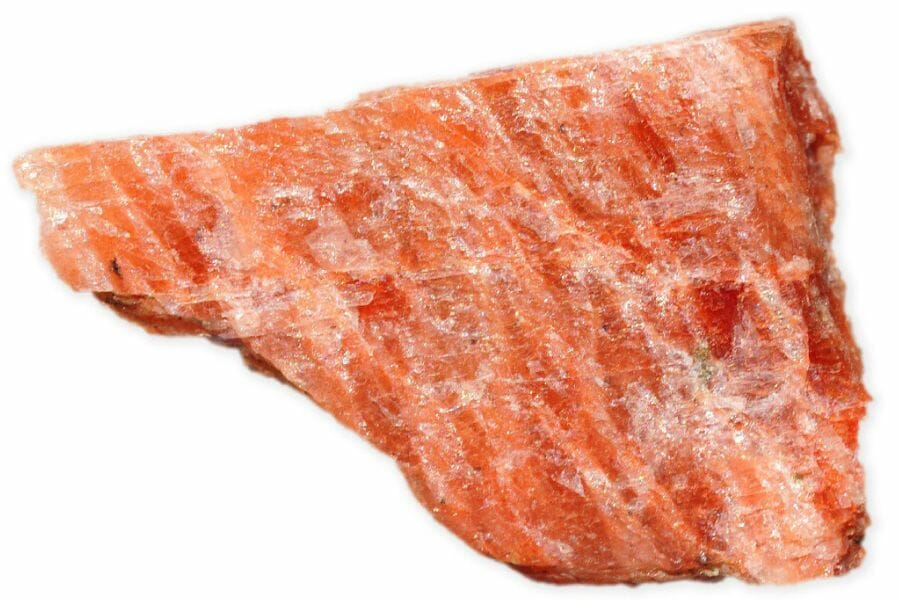
92 Crawford Gulch Rd, Golden, CO 80403, United States
Golden Gate Canyon State Park is a state park located in Gilpin County near the town of Golden and is easily one of the most beautiful places to dige for gems in Colorado. The park is 12,000 acres of scenic beauty in the foothills of the Rocky Mountains. There are over 35 miles of trails and numerous great places to find gems.
You can explore historic sites such as an old homestead and an abandoned railroad tunnel. The park also has a Visitor Center with educational programs and interpretive displays about the area’s natural history and geology.
The Types Of Gems Found At Golden Gate Canyon State Park
While exploring the area, you can keep an eye out for many gems, but this place is best known for:
- Black Tourmaline
- Feldspar
- Garnet
- Mica
The Best Time To Visit Golden Gate Canyon State Park
The best time to visit Golden Gate Canyon State Park is during the summer months of June, July, and August. During these months, temperatures are mild and the days are long, allowing for plenty of time to mine gems, explore the park’s hiking trails, and other outdoor activities.
Pike’s Peak
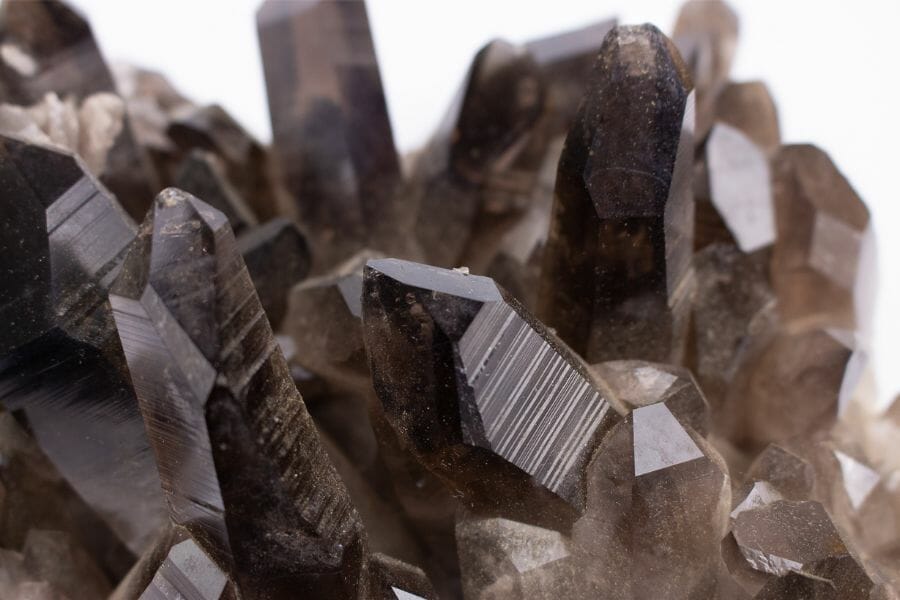
5089 Pikes Peak Highway, Cascade, CO 80809
Pike’s Peak is a mountain in the Front Range of the Rocky Mountains. Located in El Paso County, it is one of the most visited mountains in the world and is also known as “America’s Mountain”. It stands at an elevation of 14,115 feet (4,302 m), making it one of Colorado’s 53 fourteeners.
The summit can be reached by Pike’s Peak Highway, a 19-mile (30 km) toll road that winds through forested areas and offers spectacular views of the surrounding landscape.
The Types Of Gems Found At Pike’s Peak
You can find various gems when you dig for them in the areas around the mountain. Some of the most notable and interesting of gems you will find are:
- Amazonite
- Smoky Topaz
- Topaz
The Best Time To Visit Pike’s Peak In Colorado
The best time to visit Pikes Peak in Colorado is between late May and late September. During this time, the weather is generally warm and sunny, with temperatures reaching into the mid-70s Fahrenheit (about 23 degrees Celsius).
The peak of summer (July and August) tends to be the busiest time due to school holidays, but you can still enjoy gem mining and all the other attractions without too much crowding.
Old Hundred Gold Mine – Great for kids

721 County Road 4A, Silverton, CO 81433, United States
The Old Hundred Gold Mine is a former gold mine that operated from 1891 to 1942. The mine is now a tourist attraction and offers guided tours of the mine’s underground tunnels. Although gold was the main mineral mined, the mine also yielded many other minerals, including quartz crystals, fluorite, amethyst, pyrite, and calcite.
The Types Of Gems Found At Old Hundred Gold Mine
Other than gold, here is a list of gems that can be found in this mine:
- Amethyst
- Calcite
- Fluorite
- Pyrite
- Quartz
The Best Time To Visit Old Hundred Gold Mine
The best time to visit Old Hundred Gold Mine is from May through October. During these months, the weather is warm and sunny, making it an ideal time to explore the mine’s trails and learn more about its history. The mine is open every day from 10am to 4pm, so visitors can plan their visit accordingly.
Hidee Gold Mine Tours and Panning – Great for kids

1950 Hidee Mine Rd, Central City, CO 80427, United States
Hidee Gold Mine Tours and Panning is located in Central City, just 30 minutes west of Denver. Since 1859, gem miners have had the chance to experience the thrill of gold mining in one of the country’s most famous gold mining districts. You can choose from various tours, including a panning tour that allows them to learn how to pan for real gold flakes. All tours are led by experienced guides who provide a wealth of knowledge about local history and geology.
The Types Of Gems Found At Hidee Gold Mine Tours and Panning
The mine also contains the following gems in addition to gold:
- Aquamarine
- Amazonite
- Citrine
- Garnet
- Peridot
- Topaz
- Turquoise
The Best Time To Visit Hidee Gold Mine Tours and Panning
The summer months of June through September are the best time for panning and visiting this location. This time of year is typically warm and bright, making outdoor activities ideal. The mine tours normally run from 9:30 am to 4 pm, so plan your visit accordingly.
Other Great Options For Real Gem Mining in Colorado

Once you’ve had a chance to visit the recommended places we listed above, there are many other excellent spots in Colorado for real gem mining. The sites where you can find more gems are highlighted below. These are primarily aimed at people with enough gem mining experience who want to find more active mines.
- Austin Bluffs – Agate, Carnelian, Chalcedony, Jasper
- Calumet Iron Mine – Chalcopyrite, Corundum, Epidote, Pyrite, Quartz, Sapphire
- Curio Hill – Agates
- Devil’s Head – Amazonite, Fluorite, Hematite, Smoky Quartz, Tourmaline
- Houselog Creek – Agates
- Howes Gulch Area Mines – Chalcopyrite, Pyrite
- Mt. Antero – Amethyst, Aquamarine, Beryl, Pyrite, Smoky Quartz, Topaz
- Royal Gorge Area – Beryl, Green Tourmaline, Pink Tourmaline
- Sedalia Copper Mine – Actinolite, Almandine, Azurite, Beryl, Chrysocolla, Epidote, Kyanite, Pyrite, Quartz, Tourmaline
- Topaz Mountain Gem Mine – Topaz
- Turret Mining District – Beryl, Feldspar, Garnet, Hematite, Jasper, Quartz
- Wisdom Ranch Prospect – Beryl, Chrysoberyl, Garnet
- Willow Creek – Amethyst, Agate, Chalcedony, Sphalerite
- Wolf Creek Pass – Agate, Chalcedony, Jasper, Moonstone, Pyrite, Quartz, Zeolite
The Top Public Gem Mining Locations in Colorado
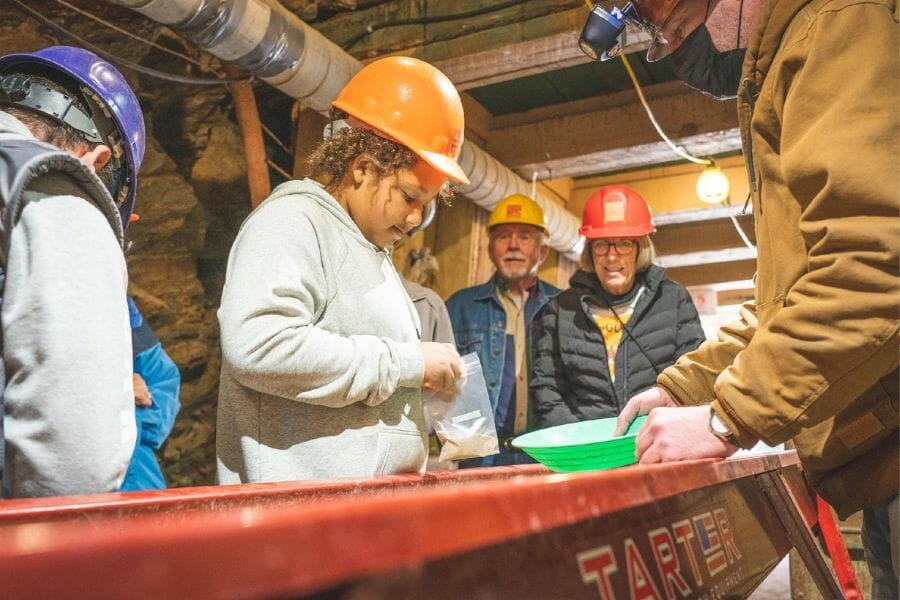
There are not a lot of public gem mining places in Colorado. However, if you want to introduce gem mining to your kids, gold mining is also a good start. Here is a list of public gold mine locations in the state where your kids can pan for gold and other gems:
- The Bachelor – Syracuse Mine – 95 Gold Mountain Trl, Ouray, CO 81427, United States
- Capital Prize Gold Mine – 1016 Biddle St., Georgetown, CO 80444, United States
- Country Boy Mine – 0452 French Gulch Rd, Breckenridge, CO 80424, United States
- Phoenix Gold Mine – 800 Trail Creek Rd, Idaho Springs, CO 80452, United States
Colorado Gem Mining Laws And Regulations
When you dig for gems in Colorado, you must ensure you abide by all local rules. Colorado Parks and Wildlife regulates all recreational gem hunting activities in Colorado. To ensure a safe and enjoyable experience, it is essential to understand and follow all applicable regulations.
Gem hunting is allowed on public lands as long as it does not disturb wildlife or vegetation. Gem hunters must obtain necessary permits and follow applicable rules and regulations, including those related to the use of motorized vehicles in remote areas. It is essential to remember that collecting gems from private lands requires the landowner’s permission.
Gems can be collected with hand tools only, such as shovels, pickaxes, hand screens, and sieves. No explosives or chemical agents may be used in gem hunting activities. All tools must be carried out after use; leaving any tools behind is prohibited. Collecting petrified wood is also permitted, but cutting down trees or collecting live plants is prohibited without a permit from Colorado Parks.
For more information about Colorado’s gem mining laws and regulations, visit Colorado Parks and Wildlife through the link above.
Additional places to mine for gems in nearby states
After visiting each place on the list above, you can use the guides we’ve provided below to discover more gems in nearby states if you’re also planning to travel there:
- Gem mining in Arizona
- Gem mining in Kansas
- Gem mining in Nebraska
- Gem mining in New Mexico
- Gem mining in Oklahoma
- Gem mining in Utah
- Gem mining in Wyoming
If you have any recommendations we haven’t covered, please leave them in the comments below!

